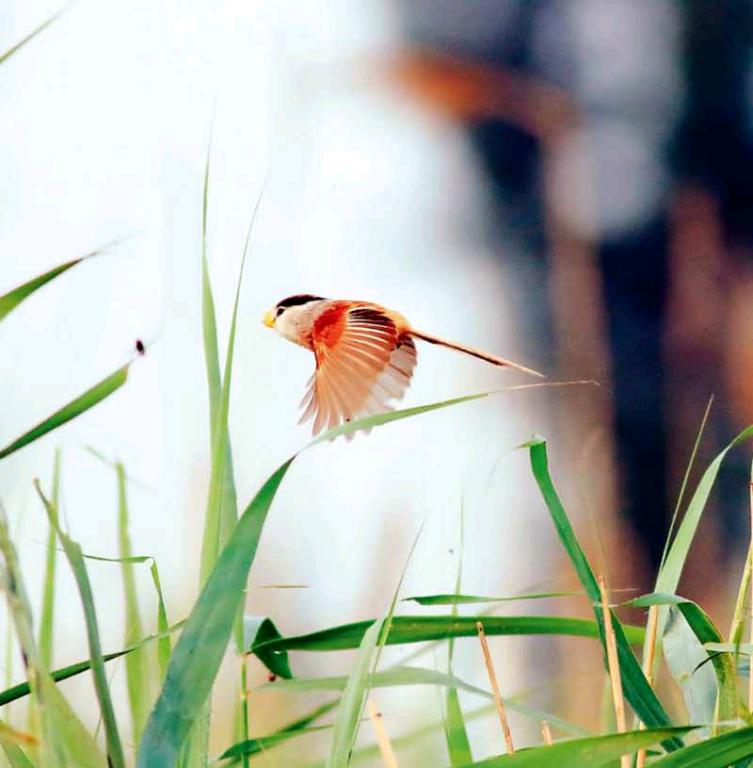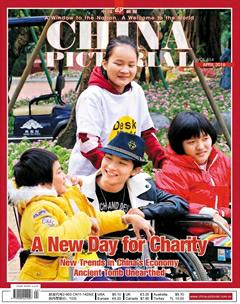Shanghai’s Reed Parrotbill
by+He+Haiqing
In January 2016, at the annual session of the Shanghai Municipal Peoples Political Consultative Conference, 16 members including Yin Jingyuan, vice president of Shanghai Science & Technology Committee, and Zhou Baochun, associate researcher at Natural History Research Center of Shanghai Science & Technology Museum, proposed that the endangered reed parrotbill be named the citys official bird and that its habitat be better protected.
As a Shanghai native, the bird likes the local climate, soil and landforms and plays an important role in the local ecology. “Indigenous species, even common animals and plants, play important roles in maintaining the cycles of Shanghais ecology,” notes Zhou Baochun.
In 1862, French missionary Jean Pierre Amand David (1826-1900) arrived in China and began collecting natural samples for the French natural museum while doing missionary work. He eventually discovered Davids deer and Chinas giant panda. In 1867, another French missionary, Pierre Marie Heude (1836-1902), arrived. Proficient in botany, ornithology and geology, Heude discovered a bird among reeds in Jiangsu Province (some of which is now Shanghai Municipality). He couldnt identify it, so he sent a specimen back to David in France, who after making measures and documentation, named the bird after Heude: Paradoxornis heudei. Since then, this little bird, found only in China, has been a symbol of local pride. The animal is about 20 centimeters long, with a sparrow-like belly and a long tail that accounts for half of its total body length. Its black-yellow back and brown-yellow belly are starkly set off by its thick yellow parrot-like beak, especially when it is seen perching in the green reed, eating insects.
Endangered
One of only a few species specific to Shanghai, the reed parrotbill is listed as near threatened on the Red List of the International Union for Conservation of Nature and Nature Resources (IUCN). The bird greatly depends on a specific environment, a habit which threatens its survival.“The reed parrotbill only eats insects in reeds,” says Ma Zhijun, professor at School of Life Sciences of Fudan University. So the location and health of reeds determine the survival of the bird.
Shanghai covers an area of 6,300 square kilometers, about 62 percent of which is developed from intertidal zones, resulting in decreasing and broken habitat for the reed parrotbill. Due to long distance between the fragmented habitats and the birds poor flying capacity, communica- tion among populations of the species decreased, hurting genetic diversity and proliferation of the species.

Once important habitats for the reed parrotbill, the banks of the Huangpu River and Dingshan Lakes have been taken over by all kinds of buildings, leaving only“reed patches.” In early spring of each year, reed harvesting consumes a major portion of the birds food resources. After the harvest, the birds still return to the reed areas, but the quantity of groups and overall population both drop dramatically.
In the early 20th Century, in order to consolidate mud-transferred land, Shanghai introduced foreign smooth cord-grass to east Chongming tidal flat, and the plant soon thrived and spread to conquer many other coastal tidal flats in the city, threatening the survival of reeds and the reed parrotbill along with them.
Mud Flats Protection
At the mouth of the Yangtze River, Shanghai boasts 400,000 hectares of wetlands, 90 percent of which is natural. One of the most important ecological systems, the wetland is critical for the citys water supply and climate regulation and provides habitat for 70 to 80 percent of local wild animals and plants.
“Reed parrotbill cannot survive without tidal flats and wetlands,” explains Yin Jingyuan. “If all the tidal flats and wetlands in Shanghai disappear one day, not only will the city lose the bird and large and natural water purifiers, but also the earth will lose an important stopover along the Eastern Asia-Australia avian migration route.”
Facing shrinking wetlands and tidal flats and endangered reed parrotbill, Shanghai is taking measures. In Chongming Xisha Wetland Park, Shanghai Science & Technology Committee set up a research base for wetland restoration. Eighty percent of the reed in the park is cut in winter to prevent fire and help the reeds growth next year. The remains will be kept for migrating birds. Microbial reworking is carried on in tidal wetland to accommodate different water birds. The park employs different methods to take care of different wetlands.
By the end of 2015, the area of protected wetlands in Shanghai exceeded 130,000 hectares, 34.5 percent of total wetland area. Each year, millions of migrating birds stop in Shanghai to rest during their long journey between Australia, Siberia and Alaska.

